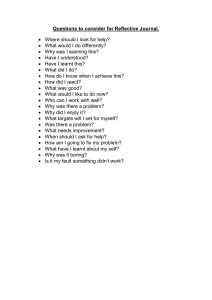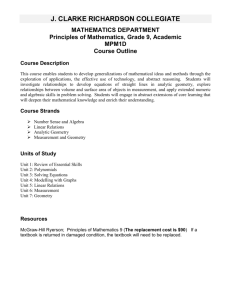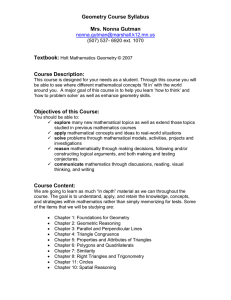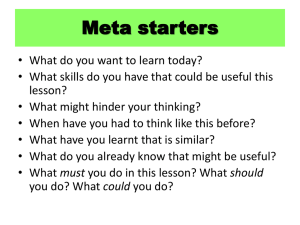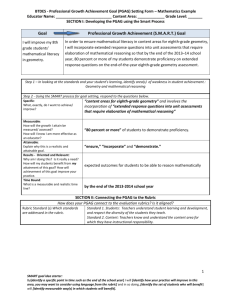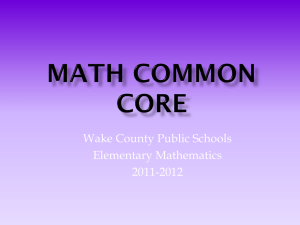Reflective Learning Task in Geometry
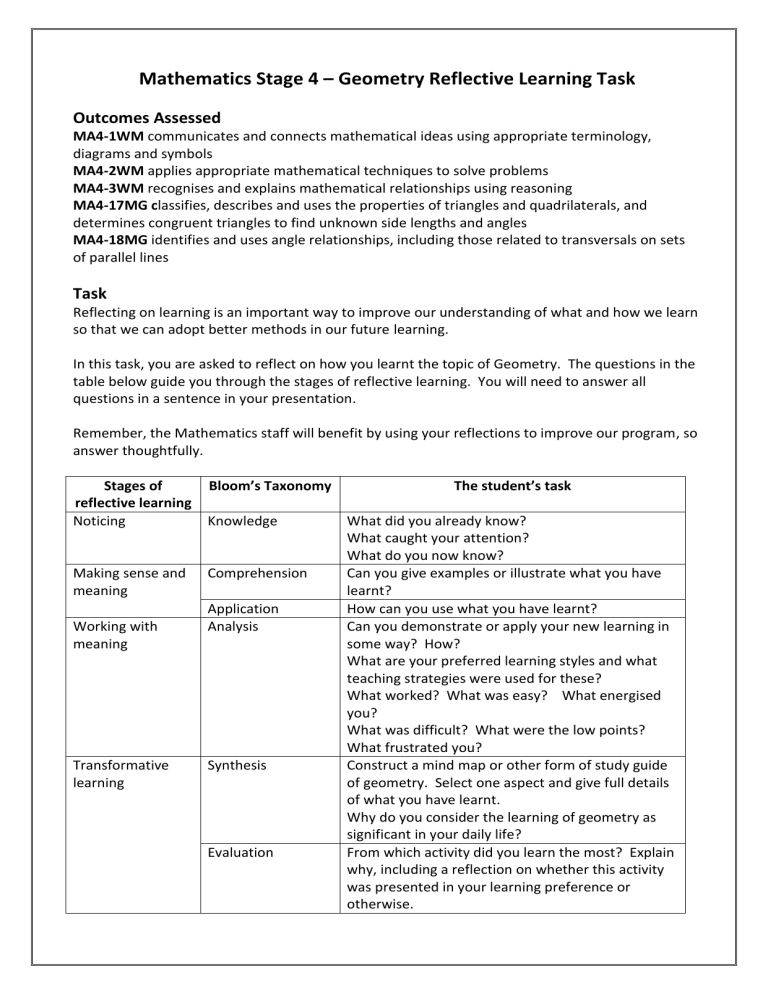
Mathematics Stage 4 – Geometry Reflective Learning Task
Outcomes Assessed
MA4-1WM communicates and connects mathematical ideas using appropriate terminology, diagrams and symbols
MA4-2WM applies appropriate mathematical techniques to solve problems
MA4-3WM recognises and explains mathematical relationships using reasoning
MA4-17MG classifies, describes and uses the properties of triangles and quadrilaterals, and determines congruent triangles to find unknown side lengths and angles
MA4-18MG identifies and uses angle relationships, including those related to transversals on sets of parallel lines
Task
Reflecting on learning is an important way to improve our understanding of what and how we learn so that we can adopt better methods in our future learning.
In this task, you are asked to reflect on how you learnt the topic of Geometry. The questions in the table below guide you through the stages of reflective learning. You will need to answer all questions in a sentence in your presentation.
Remember, the Mathematics staff will benefit by using your reflections to improve our program, so answer thoughtfully.
Stages of reflective learning
Noticing
Bloom’s Taxonomy
Knowledge
The student’s task
Making sense and meaning
Working with meaning
Transformative learning
Comprehension
Application
Analysis
Synthesis
Evaluation
What did you already know?
What caught your attention?
What do you now know?
Can you give examples or illustrate what you have learnt?
How can you use what you have learnt?
Can you demonstrate or apply your new learning in some way? How?
What are your preferred learning styles and what teaching strategies were used for these?
What worked? What was easy? What energised you?
What was difficult? What were the low points?
What frustrated you?
Construct a mind map or other form of study guide of geometry. Select one aspect and give full details of what you have learnt.
Why do you consider the learning of geometry as significant in your daily life?
From which activity did you learn the most? Explain why, including a reflection on whether this activity was presented in your learning preference or otherwise.
Presentation
You may choose one of the following ways of delivering your reflective learning analysis:
(1) a written report
(2) a one minute oral presentation
(3) a poster with a collage of thoughts
(4) Another method to be negotiated with your teacher.
